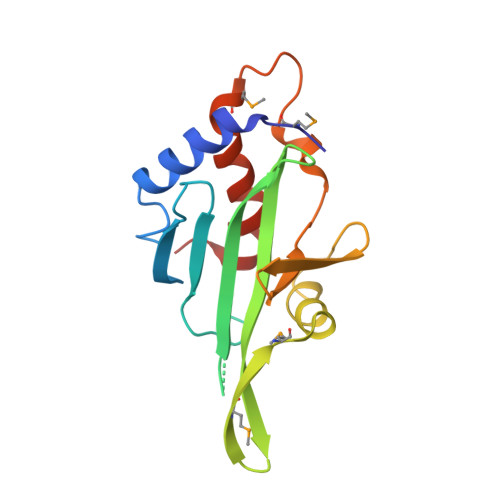Structure of the autophagic E2 enzyme Atg10
Hong, S.B., Kim, B.W., Kim, J.H., Song, H.K.(2012) Acta Crystallogr D Biol Crystallogr 68: 1409-1417
- PubMed: 22993095
- DOI: https://doi.org/10.1107/S0907444912034166
- Primary Citation of Related Structures:
4EBR - PubMed Abstract:
Autophagy is a regulated degradation pathway that plays a critical role in all eukaryotic life cycles. One interesting feature of the core autophagic process, autophagosome formation, is similar to ubiquitination. One of two autophagic E2 enzymes, Atg10, interacts with Atg7 to receive Atg12, a ubiquitin-like molecule, and is also involved in the Atg12-Atg5 conjugation reaction. To date, no information on the interaction between Atg10 and Atg7 has been reported, although structural information is available pertaining to the individual components. Here, the crystal structure of Atg10 from Saccharomyces cerevisiae is described at 2.7 Å resolution. A significant improvement of the diffraction limit by heavy-atom derivatization was essential for structure determination. The core fold of yeast Atg10 is well conserved compared with those of Atg3 and other E2 enzymes. In contrast to other E2 enzymes, however, the autophagic E2 enzymes Atg3 and Atg10 possess insertion regions in the middle of the core fold and may be involved in protein function. The missing segment, which was termed the `FR-region', in Atg10 may be important for interaction with the E1 enzyme Atg7. This study provides a framework for understanding the E2 conjugation reaction in autophagy.
Organizational Affiliation:
School of Life Sciences and Biotechnology, Korea University, Seoul 136-701, Republic of Korea.
















